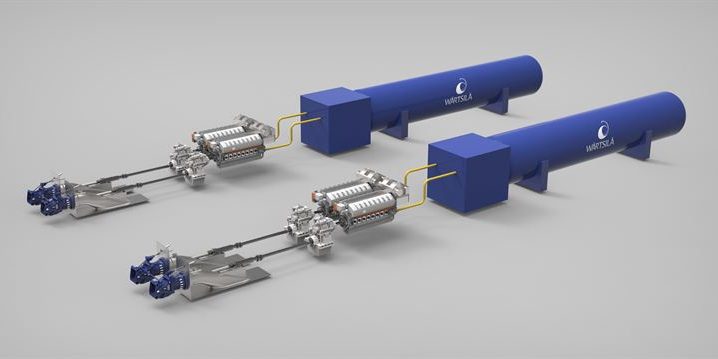Wärtsilä will supply LNG dual fuel engines and high-performance axial flow waterjets for a new high-speed ro-pax ferry. The ship, the ‘Margarita Salas’, is being built at Astilleros Armon Gijon in Spain on behalf of the Spanish shipping company Baleària. It will have the same dimensions as its sister-vessel, the ‘Eleanor Roosevelt’, which at 123 meters is currently the longest high-speed ferry in the world in operation.
While the dimensions of the two ships will be the same, the new vessel’s Wärtsilä engines will have 10% greater power and increased efficiency. Also, the latest-generation WXJ Wärtsilä waterjets will deliver even better performance. Overall, the ‘Margarita Salas’ will feature optimized speed and capacity and, like the ‘Eleanor Roosevelt’, will operate on LNG fuel.
“This new ship will combine the most competitive features of the Eleanor Roosevelt with a series of innovations in its design and engineering to enhance the customer experience,” said Pablo Garcia, New Builds Project Manager at Baleària.
“It is an honor to have been selected as the integrated drivetrain package supplier for this state-of-the-art vessel. We have been able to offer superior technical performance, the best power-to-weight ratio, the best overall equipment efficiency, and enhanced integration support. This represents a value proposition that will make this new ferry superbly efficient,” commented Jesus Puelles, General Manager Sales Spain Wärtsilä.
The Wärtsilä scope includes four Wärtsilä 31DF dual fuel engines operating primarily on LNG fuel, four Wärtsilä WXJ steerable-reversible inboard hydraulic waterjets with Protouch propulsion control system, and two LNGPac fuel storage and supply systems. LNG is currently the cleanest and most mature marine fuel available within the industry’s decarbonization focus.
The IMO Tier III compliant Wärtsilä 31DF is the most powerful engine in its class and features outstanding efficiency. The axial flow of the Wärtsilä waterjets reduces the installation footprint by an average of 25% compared to conventional systems. Furthermore, the propulsion system will enable the vessel to reach a service speed of 35 knots.
Source: Wärtsilä







